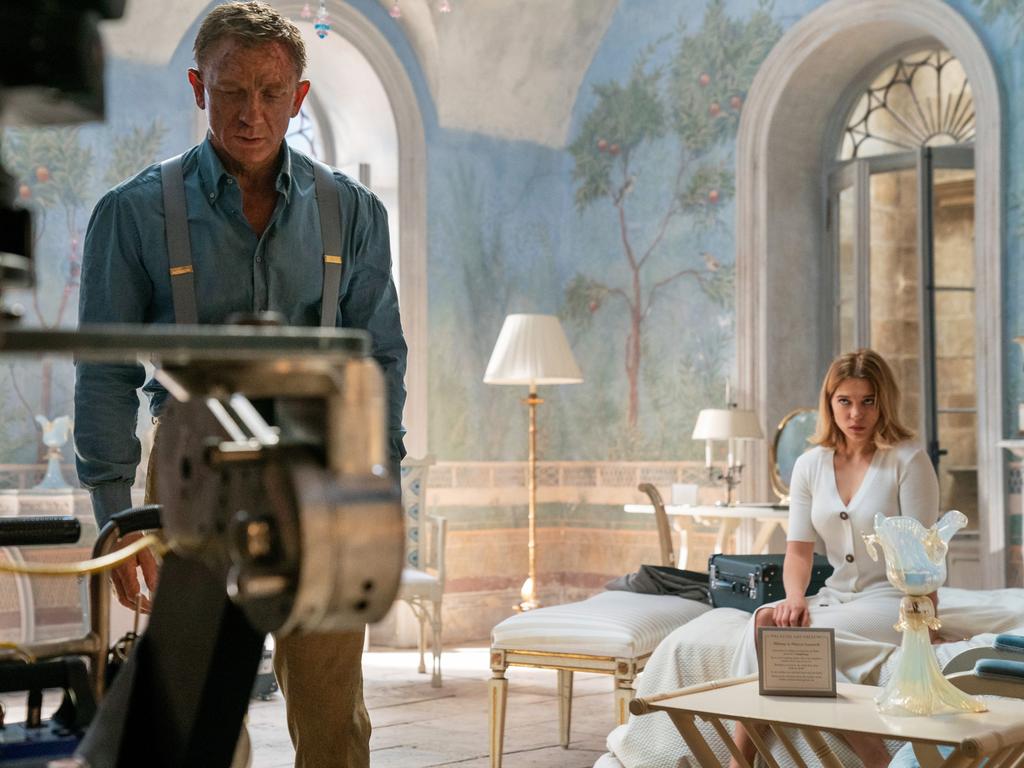No Time To Die brings James Bond out of retirement
Screenwriters Neal Purvis and Robert Wade reveal how they devise new adventures for James Bond while staying true to Ian Fleming’s creation.
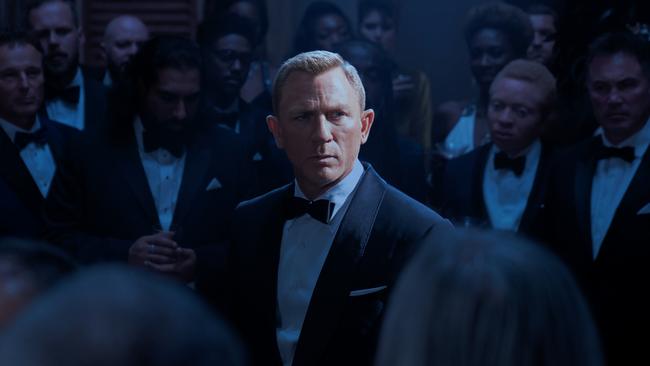
If you cannot be James Bond, writing a James Bond film is probably the next best thing. On the page you can live the fantasy life of the British superspy with tailored suits, smart and beautiful women, fast cars, guns and gadgets, mind-blowing stunts and fight scenes, and clever one-liners to outwit a theatrical villain, all set to an unforgettable score.
Neal Purvis and Robert Wade have co-written seven 007 films, from Pierce Brosnan’s The World is Not Enough (1999) to Daniel Craig’s No Time To Die, which opens in Australian cinemas on Thursday. They must keep faith with Ian Fleming’s literary creation and a vast film legacy, while ensuring the films are contemporarily relevant.
“Bond is a complex and flawed man,” Wade, 59, tells The Australian. “He keeps getting knocked down but keeps getting back up. It’s his resilience and doggedness that make him admirable. There is something reassuring about an individual who digs deep and sacrifices to make a difference.”
“It is also the subjects you choose,” Purvis, 60, says. “Casino Royale (2006) was relevant in that we dealt with financing terrorism. The surveillance culture we were dealing with in Spectre (2015) was prescient. And it seems to still entertain people by having a hero who sorts things out.”
Fleming drew on his experience in naval intelligence during World War II when writing his first novel, Casino Royale (1953). The stories were also a form of therapy for the life he wished he had led. He wrote the novels annually, on a gold typewriter, at his Jamaican home, Goldeneye, until his death in 1964. The character’s name was spotted on a bookshelf: James Bond’s Birds of the West Indies (1936).
The books were immensely popular. John F. Kennedy named From Russia, With Love (1957) as one of his favourite books. Fleming said he wrote for “warm-blooded heterosexual adults” not “schoolboys”. Some passages, in Casino Royale for example, about women being “softly wooed or brutally ravaged” are unacceptable today. Nevertheless, the novels continue to infuse the films.
“Each film needs to feel fresh and also feel familiar,” explains Wade. “We have always found Fleming’s books and short stories to be a source of material and a touchstone for getting the scent of it. So, in this new film there are quite a lot of elements from different Fleming novels that we had not used before.”
The films established a visual representation of the Bond stories and fans have come to expect the usual tropes, from fast cars and clever gadgets to stunning and intelligent women, stylish clothes, martinis and casinos, the pantomime-style villain, and memorable lines of dialogue such as the inimitable introduction: “Bond, James Bond.”
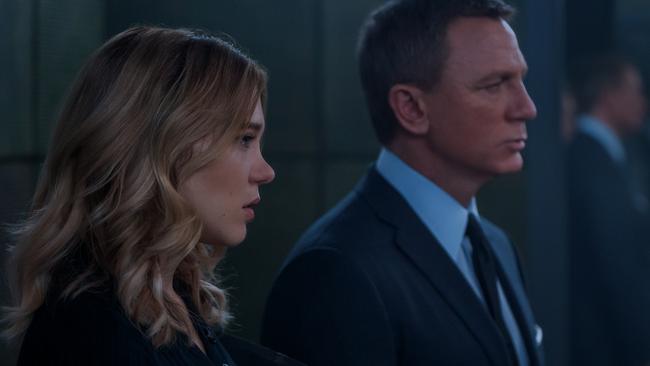
Who could forget Bond (Sean Connery) with a laser edging closer to his crotch asking Goldfinger: “Do you expect me to talk?” And Goldfinger replying: “No, Mr Bond, I expect you to die.”
Or when Q (Desmond Llewelyn) informed Bond about a key feature in his Aston Martin DB5. “Ejector seat? You’re joking,” Bond said. “I never joke about my work, 007,” Q responded.
The challenge is to include some, if not most, of these ingredients while avoiding nostalgia and pastiche. Purvis and Wade turned many of these tropes on their head. When M (Judi Dench) told Bond (Brosnan) he was “a sexist, misogynist dinosaur, a relic of the Cold War”, she said what many in the audience were thinking.
The writers removed more of the traditional guardrails with Craig. Moneypenny and Q were absent from Casino Royale. When the barman asked if he wanted his martini shaken or stirred, Bond replied: “Do I look like I give a damn?” Craig did not say he was “Bond, James Bond” until the end of his first film – when he was. When Q (Ben Whishaw) handed Bond his Walther PPK pistol and a radio transmitter in Skyfall (2012), he said: “Not exactly Christmas, is it?” Q replied: “Were you expecting an exploding pen? We don’t really go in for that anymore.”
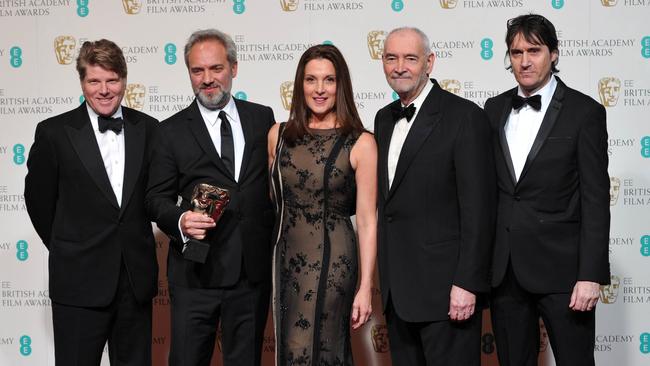
With Craig, it was also an opportunity to take the character of Bond in a new direction, departing from the 20 previous films that starred Connery, George Lazenby, Roger Moore, Timothy Dalton and Brosnan. Craig’s five films took Bond from when he first earned his licence to kill to being retired, with a continuing storyline and recurring characters.
This Bond still had the sharp suits, an eye for women and cold-blooded killer instincts, but his character was more nuanced. We saw him on an emotional rollercoaster as he fell in love with Vesper Lynd (Eva Green) and was wounded by her betrayal, being deeply affected by the death of M, and falling for Madeleine Swann (Lea Seydoux). “We wrote Casino Royale for the Fleming character because Daniel hadn’t been cast,” says Purvis. “We could see this as a story arc that you could follow over however many films he was going to make. With the death of Vesper Lynd, you saw what was driving him, how he compartmentalised it and suffered, but it is what keeps him going.”
Craig’s tenure as Bond – 2006 to 2021 – is the longest of all. Casino Royale is arguably the most critically acclaimed Bond film and is, in my view, the best. Skyfall is certainly the most successful, taking $US1.1bn at the box office.
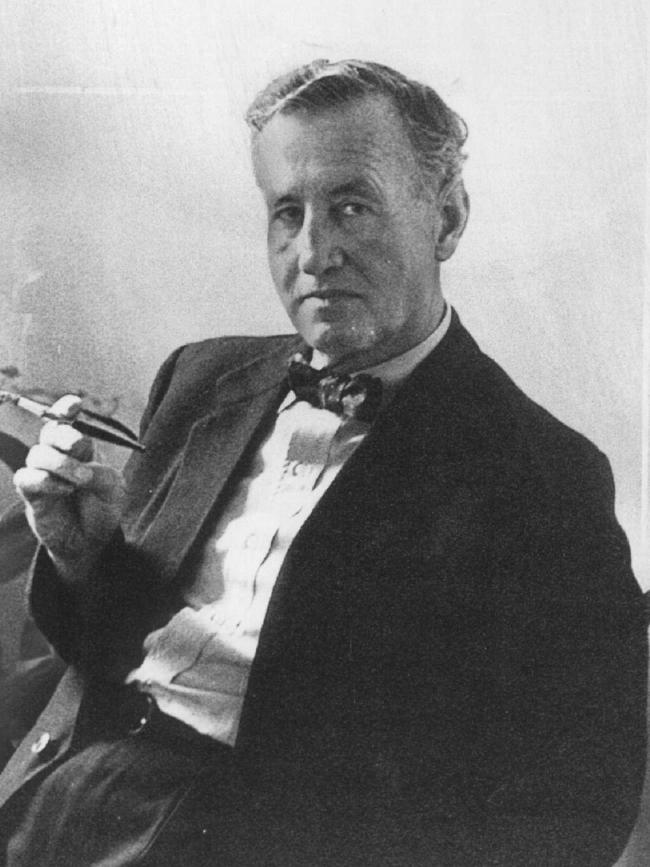

Wade and Purvis have a unique partnership. They usually meet twice a week at a local cafe. They follow the news, scour books and search online for ideas. They write separately and revise each other’s work. They both get excited about seeing what the other has written. “That you can talk to someone is what’s so good,” says Purvis. “Two people make a different person and we’ve both got our strengths and obviously one of us has got his weaknesses.”
Wade laughs. “Neal has got his weaknesses,” he says. “In terms of the Bond films, it is about stamina. It is really gruelling for an individual writer … but when you can share the load it is survivable.”
There is a lot of pressure writing a Bond film. The character is culturally iconic. The producers are protective. Audiences are invested. Every movie is a global event: big, bold and only for cinemas. Purvis recalls producer Michael G. Wilson once telling him: “No one wants to make the last Bond movie.”
No Time To Die had production delays with director Danny Boyle and co-writer John Hodge departing after “creative differences” with Wilson and co-producer Barbara Broccoli. Purvis and Wade were recalled for duty. Director Cary Joji Fukunaga also worked on the script. And Phoebe Waller-Bridge sharpened the dialogue. With any Bond film, there are rewrites and other writers.
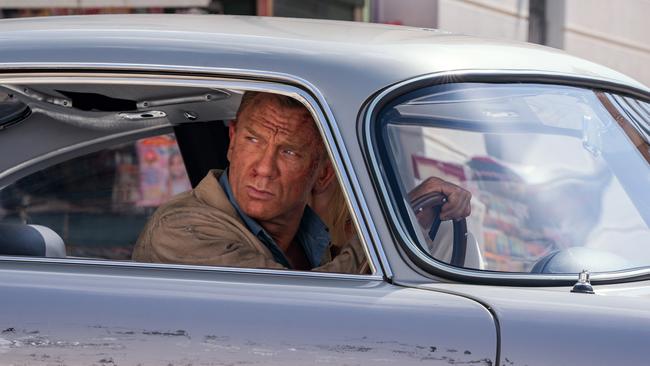
At the start of this three-way interview via Zoom, Wade was quick to point out his wife, Susan, is Australian. It begs the question: why hasn’t Bond been to Australia? Fleming visited Sydney during World War II and thought Bond should travel down under, perhaps in search of a blonde femme fatale. Wade says they would “never say never” to writing an eighth 007 script. So, I make my pitch: can they write a scene with Bond on a speedboat on Sydney Harbour or climbing the sails of the Opera House, pursuing a villain to the outback, or diving the Great Barrier Reef? Purvis reveals Wade has been trying to get Bond to Australia for 20 years. They both agree it would be terrific.
Next year marks the 60th anniversary of the first Bond film, Dr No (1962). Purvis and Wade suggest the secret to the success and longevity is the combination of what Fleming created, the shrewd adaptation of it for the screen by original producers Harry Saltzman and Albert R. “Cubby” Broccoli, and the continued stewardship by Broccoli’s stepson, Michael, and daughter Barbara.
“It is still slightly mystifying but Fleming created something which we always stick to, and it just seems to work,” says Purvis. “The films also reflect their times and the quality on screen has been maintained. When you go and see a Bond movie, you know what you are going to get to some extent, but it still delivers and that is down to the family behind it all.”
No Time To Die opens in cinemas on Thursday. No Time To Die: The Making of the Film by Mark Salisbury is published by Titan.


